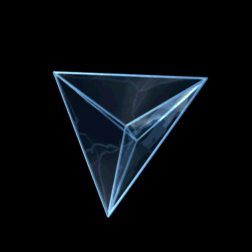A new paper by Shawn Powers of USC and Mohammed el-Nawawy of Queens University of Charlotte looked at the effect of international cable news on the ideology of its viewers. Not surprisingly, they found that people were only interested in "news" that didn't contradict what they already believed:
Powers and el-Nawawy show that global media consumers tuned in to international news media that they thought would further substantiate their opinions about U.S. policies and culture, and provide them with information on the international issues that they deemed most important. The study found a strong relationship between the participants' attitudes toward U.S. policy and culture and their choice of broadcaster. Those who were dependent on BBC World and especially CNNI were overall more supportive of U.S. foreign policy.
[...]
The Princeton political scientists Christopher Achen and Larry Bartels analyzed survey data from the 1990's to prove this point. During the first term of Bill Clinton's presidency, the budget deficit declined by more than 90 percent. However, when Republican voters were asked in 1996 what happened to the deficit under Clinton, more than 55 percent said that it had increased. What's interesting about this data is that so-called "high-information" voters (these are the Republicans who read the newspaper, watch cable news and can identify their representatives in Congress) weren't better informed than "low-information" voters. According to Bartels, the reason knowing more about politics doesn't erase partisan bias is that voters tend to only assimilate those facts that confirm what they already believe. If a piece of information doesn't follow Republican talking points (and Clinton's deficit reduction didn't fit the "tax and spend liberal" stereotype) then the information is conveniently ignored.
The bleak lesson is that we turn the spotlight of attention into an information-filter, a way to block-out disagreeable points of view. Consider this experiment, which was done in the late 1960's, by the cognitive psychologists Timothy Brock and Joe Balloun.
Brock and Balloun played a group of people a tape-recorded message attacking Christianity. Half of the subjects were regular church-goers while the other half were committed atheists. To make the experiment more interesting, Brock and Balloun added an annoying amount of static (a crackle of white noise) to the recording. However, they allowed listeners to reduce the static by pressing a button, so that the message suddenly became easier to understand. Their results were utterly predicable and rather depressing: the non-believers always tried to remove the static, while the religious subjects actually preferred the message that was harder to hear. Later experiments by Brock and Balloun demonstrated a similar effect with smokers listening to a speech on the link between smoking and cancer. We silence the cognitive dissonance through self-imposed ignorance.
Read more...
Powers and el-Nawawy show that global media consumers tuned in to international news media that they thought would further substantiate their opinions about U.S. policies and culture, and provide them with information on the international issues that they deemed most important. The study found a strong relationship between the participants' attitudes toward U.S. policy and culture and their choice of broadcaster. Those who were dependent on BBC World and especially CNNI were overall more supportive of U.S. foreign policy.
[...]
The Princeton political scientists Christopher Achen and Larry Bartels analyzed survey data from the 1990's to prove this point. During the first term of Bill Clinton's presidency, the budget deficit declined by more than 90 percent. However, when Republican voters were asked in 1996 what happened to the deficit under Clinton, more than 55 percent said that it had increased. What's interesting about this data is that so-called "high-information" voters (these are the Republicans who read the newspaper, watch cable news and can identify their representatives in Congress) weren't better informed than "low-information" voters. According to Bartels, the reason knowing more about politics doesn't erase partisan bias is that voters tend to only assimilate those facts that confirm what they already believe. If a piece of information doesn't follow Republican talking points (and Clinton's deficit reduction didn't fit the "tax and spend liberal" stereotype) then the information is conveniently ignored.
"Voters think that they're thinking, but what they're really doing is inventing facts or ignoring facts so that they can rationalize decisions they've already made."
The bleak lesson is that we turn the spotlight of attention into an information-filter, a way to block-out disagreeable points of view. Consider this experiment, which was done in the late 1960's, by the cognitive psychologists Timothy Brock and Joe Balloun.
Brock and Balloun played a group of people a tape-recorded message attacking Christianity. Half of the subjects were regular church-goers while the other half were committed atheists. To make the experiment more interesting, Brock and Balloun added an annoying amount of static (a crackle of white noise) to the recording. However, they allowed listeners to reduce the static by pressing a button, so that the message suddenly became easier to understand. Their results were utterly predicable and rather depressing: the non-believers always tried to remove the static, while the religious subjects actually preferred the message that was harder to hear. Later experiments by Brock and Balloun demonstrated a similar effect with smokers listening to a speech on the link between smoking and cancer. We silence the cognitive dissonance through self-imposed ignorance.










.png)




